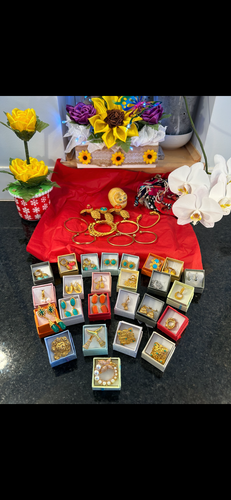
Jewelry: The Art of Silent Self-Expression
Does expressing who you are come naturally to you? Are you confident in connecting and communicating with others, or do you feel a bit awkward, tongue-tied, and perhaps worried about what others might be thinking of you?
Self-expression is much more than how we communicate what we think and feel; it’s also about how we present our inner selves to the world. Struggling to express ourselves fully can negatively impact our mental health and well-being. In fact research has shown that loneliness and well-being are closely tied to our ability to communicate ourselves authentically (Hodge, 2022).
Authentic self-expression is defined as alignment between who we feel ourselves to be internally and the actions, values, and thoughts we communicate externally. In other words, when we express ourselves authentically, who we believe we are aligns with how we present ourselves to others. However, expressing ourselves isn’t always easy for everyone, and jewelry offers a unique solution to the limits of words, providing a means of non-verbal communication. For example, wearing a small piece of culturally meaningful jewelry in a professional setting can subtly express one’s heritage. In social settings, jewelry can also act as a conversation starter, sparking new connections and conversations.
As a form of communication, self expression carries meaningful content. Historically, jewelry communicates wealth and abundance of the individual (Levian, 2018). Today, jewelry can be used to communicate more complex messages often holding deep personal significance. For instance, people could use jewelry to mark life events—women could buy new jewelry upon entering the workforce, symbolizing their shift from student to professional. Other life events that jewelry could be used to mark are usage of relationship bracelets, marriage and anniversaries, memorial and remembrances, birth and new beginning pendants, career milestones and retirement rings and so on.
Communicating these nuanced messages is essential for forming deeper connections with others. Wearing jewelry from one’s culture, for example, can indicate shared heritage, providing a source for conversation and a pathway to meaningful interactions. Such identifiers help foster a sense of belonging, as we connect with people who resonate with these expressions of identity.
Jewelry holds a unique place in the spectrum of self-expression, especially for those who may find verbal communication challenging or feel hesitant about revealing their inner selves directly. It offers a non-verbal avenue to convey identity, values, and affiliations authentically, allowing for a richer, more nuanced connection with others. Research has highlighted how authentic self-expression enhances mental well-being and fosters a deeper sense of belonging, which jewelry can facilitate by communicating cultural heritage, personal milestones, and emotional connections.
In an era that values individuality, jewelry bridges a gap between personal identity and the external world. Wearing pieces that reflect one’s culture, beliefs, or significant life events enables deeper connections with others, inviting understanding, conversation, and camaraderie. Whether it’s a subtle nod to one’s heritage in a professional setting or a bold piece symbolizing a significant personal achievement, jewelry allows for expression beyond words. Ultimately, jewelry is not merely an accessory but a testament to the human desire to be seen, understood, and connected. Through it, people can communicate who they are, fostering a sense of belonging and authenticity in a world that increasingly values both.
Written by Euphoria Canada Owner
References:
Hodge (2022):
https://www.counselling-directory.org.uk/memberarticles/what-is-self-expression-and-why-is-it-so-important
Levian (2023): https://sheenastone.com/blogs/journal/the-psychology-of-jewelry-how-accessories-impact-self-expression-and-confidence
This blog post was not written by AI. I wrote this blog post. I used AI for inspiration and grammar correction.